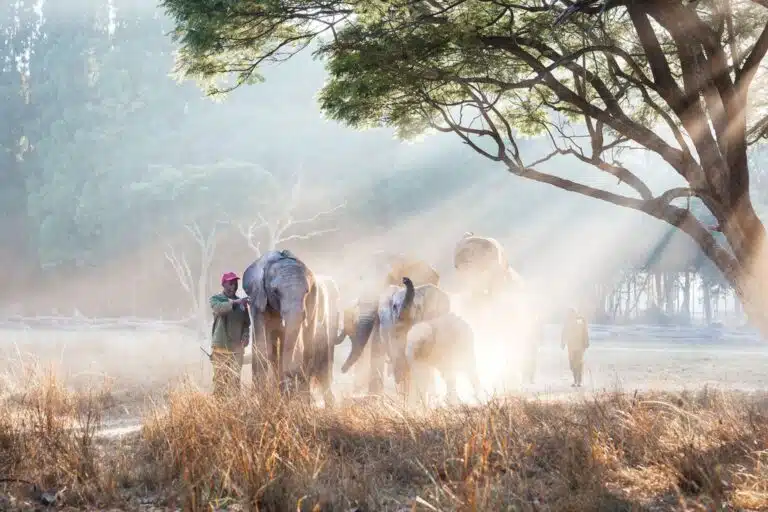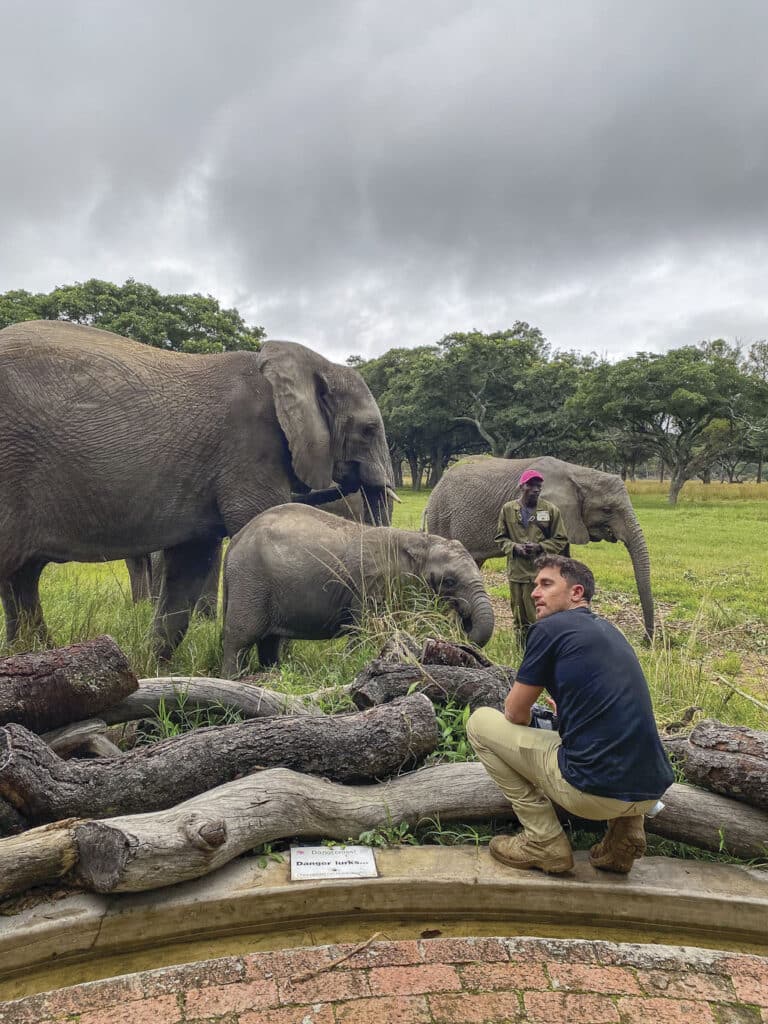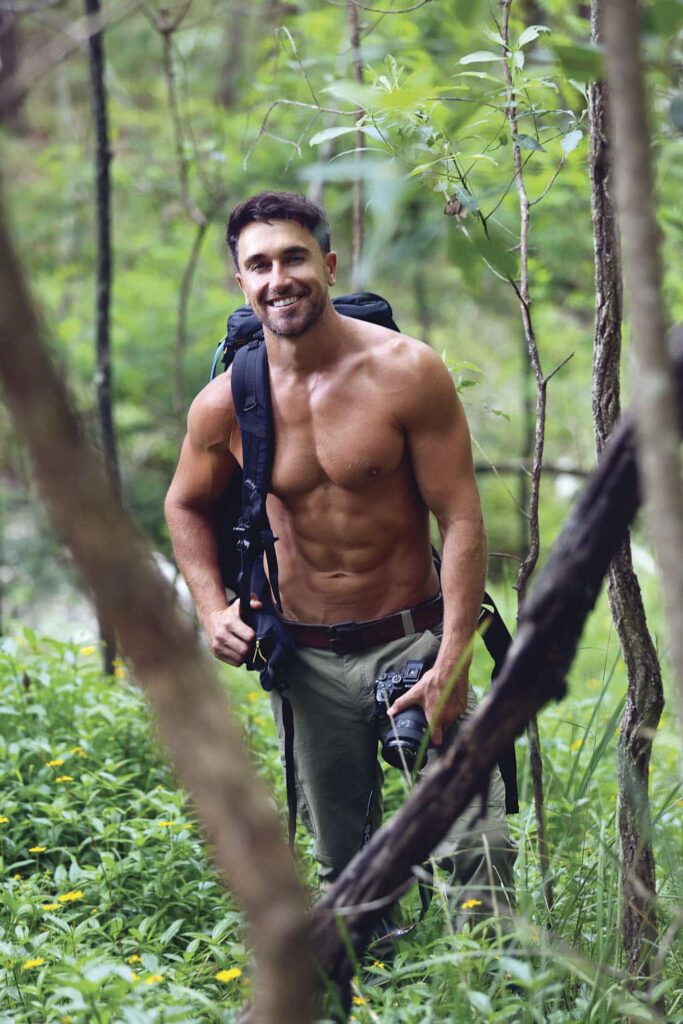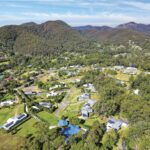ANIMALS
A Journey of Coexistence: The Translocation of Moyo and Zimbabwe’s Elephants

WORDS: Tyson Mayr PHOTOGRAPHY Tyson Mayr & Brian Usher
A personal story that will touch your heart
The sun had barely risen, but the air was already thick with tension. Moyo’s trumpeting, raw and unsettling cut through the morning mist – a sound far from her usual, gentle demeanour. For the past week, every morning, I arrived at the same location at the IFAW-Wild is Life elephant nursery in Zimbabwe and joined the team of carers as they rehabilitated this herd of elephants, but today was different. This was the morning of the translocation, a day that would mark a new chapter not just for Moyo and her herd but also for those of us committed to their future.
Zimbabwe is home to the second-largest elephant population on the planet. This is something I had witnessed firsthand as I came face to face with herds of over 100 elephants while travelling across the country with the International Fund for Animal Welfare (IFAW), learning about Room to Roam – an ambitious initiative to ensure a future for elephants through connectivity and coexistence across East and Southern Africa.

Taken during Tyson Mayr’s visit to Wild is Life – Zimbabwe Elephant Nursery.
Despite this richness, the country grapples with severe challenges as habitat fragmentation, climate change, and escalating human-wildlife conflicts lead to tragic losses. Amidst this, the IFAW-Wild is Life nursery stands out as Zimbabwe’s sole sanctuary for elephant rescue and release, offering a glimmer of hope by nurturing numerous orphaned calves back to health and providing a critical pillar in the country’s conservation efforts.
I reflected on my journey across Zimbabwe as I watched Roxy, the founder of Wild is Life, tenderly calm Moyo. I was struck by their connection – a testament to her dedicated stewardship, as it reminded me of how important Moyo really was to the entire Sanctuary. Moyo was the first elephant Roxy rescued nine years ago, and she had swiftly assumed the matriarchal mantle, becoming an integral part of the healing process for countless other rescued elephants. She wasn’t just a symbol of Wild is Life and IFAW’s success but also a beacon for the future of elephant conservation.
I joined the assembly of the translocation team – a cohort of 50+ carers, vets and logistics experts, all there for the same shared mission: to safely move Moyo and six others across 1,100 kilometres to Panda Masuie – an 85,000-acre IFAW protected habitat on the other side of the country.
Standing by the gate of the Boma, readying himself to release the elephants, was January, the lead elephant carer at Wild is Life. His usually bright eyes today reflecting the weight of the moment. His bond with Moyo, like Roxy’s, was built on years of unwavering care and mutual trust. He had been there from the beginning, his life woven into the very fabric of the sanctuary’s story.
As the briefing unfolded, the elephants watched, their unease mirroring our own. If only we could explain the impending journey and its significance. Roxy’s final words, “Let’s get these elephants back to the wild,” echoed as a rallying cry, filling us with a mixture of nervous energy and purpose.
Moyo led the charge out of the Boma, her herd following trustingly. It was a stark reminder that each of these elephants had arrived at the nursery due to human actions – poaching, conflict, climate change. They had been tiny, traumatised calves, nurtured back to health by the dedicated team. The preparations for their translocation had been extensive, considering not just physical but emotional and social readiness.
The process of tranquillising and loading the elephants onto the truck was a blur of organised chaos. Working alongside Jos, the conservation director of Wild is Life, we fitted GPS collars, an essential tool for their safety and monitoring post-release, while each team zoned in on the task at hand. I was struck with an overwhelming sense of vulnerability as I looked at these majestic, intelligent animals now helpless on the ground.
In what felt like minutes, but in reality, it was close to an hour, the elephants were all loaded onto the truck, reawakened and on their way to Panda Masuie as we immediately followed them in a support vehicle into the night.
Reflecting on the journey, the importance of the Room to Roam initiative crystallized. It wasn’t just about creating physical space for these elephants; it was about crafting a future where coexistence was not just possible but thriving. The drive through the night, parallel to the elephants’ journey, was a time of contemplation and anticipation, filled with zero sleep and a lot of roadside snacks to keep us awake.
It was a little after sunset when we arrived at Panda Masuie, an 85,000-acre haven secured by IFAW for the purpose of rewilding and releasing rescued elephants under the leadership of Jos. Wasting no time, the elephants, cautiously descending from the truck, were greeted by familiar carers, including January. Their relief was palpable as they drank and frolicked, a testament to the success of our mission. Watching this, joy and hope swelled within me. This was more than a conservation effort; it was a testament to the power of empathy, dedication, and the profound bond between humans and these majestic creatures. It demonstrated what can be achieved when we all come together and put a little effort into a common goal.
As the dust settled and the elephants began to acclimate to their new home, the significance of our work became evident. This was a step towards a future where humans and wildlife could coexist in harmony, where the echoes of the past would not dictate the rhythm of the future. The journey of Moyo and her herd was a beacon of hope, a reminder of the resilience of nature and the transformative power of collective human will.

Tyson Mayr
About Tyson Mayr
Gold Coaster Tyson Mayr is an Australian TV presenter, National Geographic traveller filmmaker, photographer and all-round adventurer. He swapped his suit and tie for a backpack in 2009 and has been travelling ever since. His stories have been shared on a range of acclaimed TV shows, and with an online community of 300,000 travel-hungry friends. Wildlife conservation is close to his heart, with Tyson championing IFAW’s critical koala rescue work during the catastrophic Black Summer bushfires of 2019–20. Passionate about protecting our wildlife and the places they call home, Tyson uses his reach to help raise awareness of IFAW’s mission in Australia and globally.









